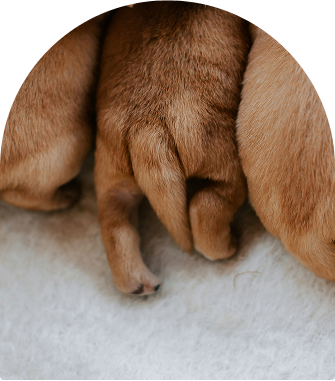319.750.1475
Why Crate Training Your Puppy Is One of the Best Decisions You'll Make
Bringing home a new puppy is exciting, chaotic, and full of cuddles. But amidst the joy, there's one essential tool that can make your life—and your puppy’s—much easier: crate training. Although we start the process for you and they are usually sleeping through the night when they come home, its a good idea to have an understanding of the process!
While some pet parents may feel hesitant about putting their pup in a crate, when done correctly, crate training is not only humane but incredibly beneficial. Here's why:
A Safe Space for Your Puppy
Think of a crate as a cozy den. Dogs are naturally den animals, and a crate provides a secure, quiet space where your puppy can relax, sleep, and feel safe. It becomes their personal retreat, especially in a busy household.
Speeds Up Potty Training
One of the biggest advantages of crate training is how it helps with housebreaking. Puppies instinctively avoid soiling their sleeping area, so a properly sized crate encourages them to hold their bladder until they’re let out. This builds a routine and teaches bladder control faster.
Encourages Better Sleep Habits
Crate training helps puppies learn when it’s time to settle down. By sleeping in their crate at night, they’re less likely to roam, whine, or get into mischief. It also helps them sleep through the night—giving you some much-needed rest too!
Makes Travel and Vet Visits Easier
A crate-trained dog is more comfortable in confined spaces, which makes car rides, vet visits, and even boarding less stressful. It’s also safer for travel, keeping your pup secure and calm.
Builds Independence and Confidence
Crate time teaches your puppy that it’s okay to be alone sometimes. This helps prevent separation anxiety and builds confidence. It’s a gentle way to teach independence while still providing comfort.
Prevents Destructive Behavior
Puppies love to chew, dig, and explore—sometimes in ways that aren’t safe. A crate keeps them out of trouble when you can’t supervise, protecting both your home and your pup.
Tips for Successful Crate Training
- Start slow: Introduce the crate with treats and toys. Let your puppy explore it freely.
- Make it cozy: Add a soft bed or blanket to make it inviting.
- Never use it for punishment: The crate should always be a positive space.
- Stick to a schedule: Routine helps your puppy feel secure.
- Be patient: Every pup learns at their own pace.
Final Thoughts
Crate training isn’t about confinement—it’s about comfort, safety, and structure. When done with love and consistency, it becomes one of the most powerful tools in raising a happy, well-adjusted dog.
So if you’re on the fence about crate training, give it a try. Your puppy will thank you—and so will your furniture!






